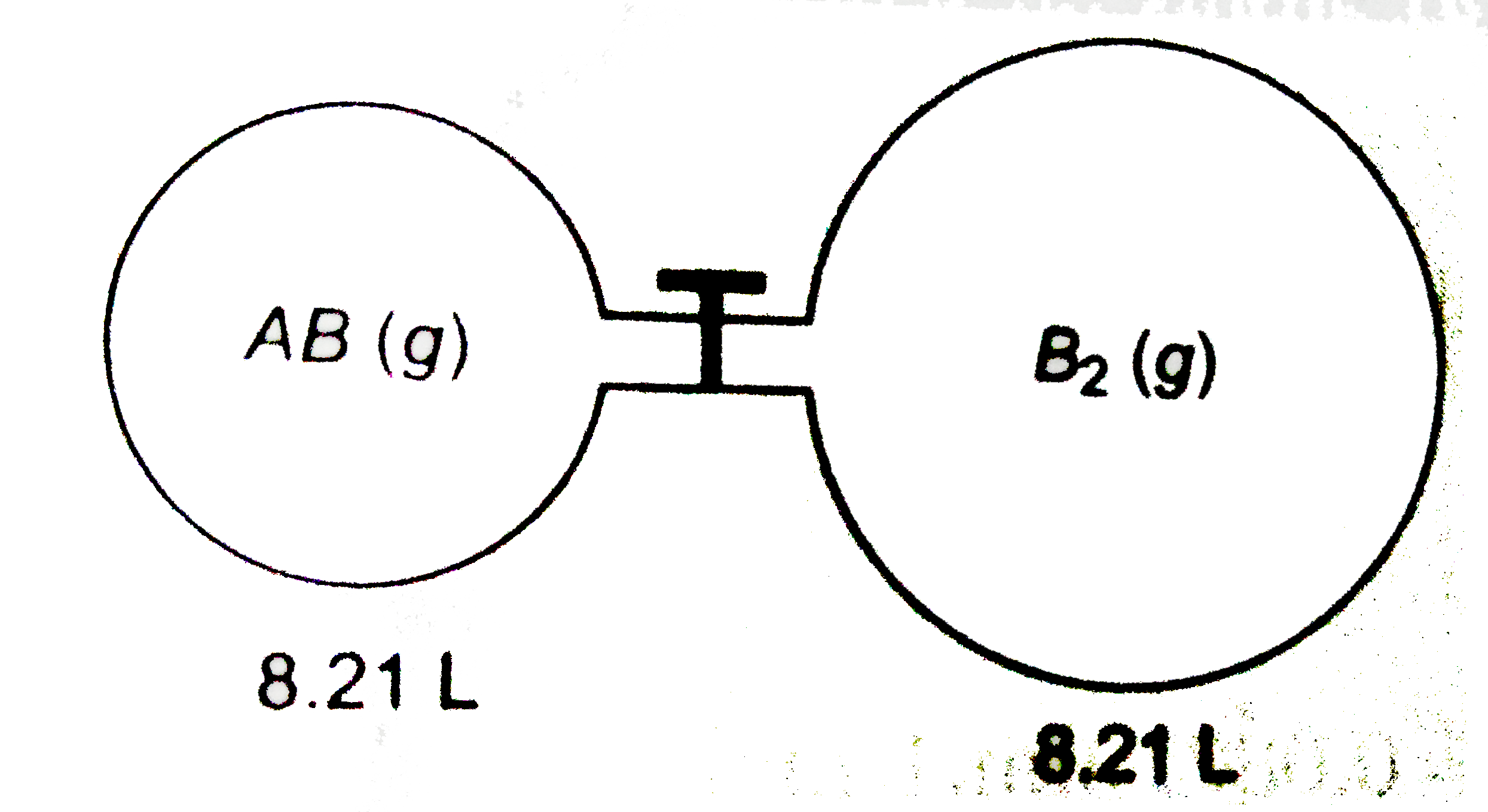A pistion exerting a pressure of 1.0atm rests on the surface of water at 100∘C. The pressure is reduced to smaller extent and as a result 10g of H2O eveportes and abosrb 20kJ fo heat. Determine
a) ΔH
b) Latent heat of vapourisation
c) W
d) ΔU
To solve the problem step by step, we need to determine the change in enthalpy (ΔH), the latent heat of vaporization (L), the work done (W), and the change in internal energy (ΔU) when 10 g of water evaporates at 100°C and absorbs 20 kJ of heat.
Step 1: Calculate ΔH
The problem states that 10 g of water evaporates and absorbs 20 kJ of heat. The change in enthalpy (ΔH) is equal to the heat absorbed during the process.
ΔH=+20kJ
Step 2: Calculate the number of moles of water
To find the latent heat of vaporization, we first need to calculate the number of moles of water that evaporated. The molar mass of water (H₂O) is approximately 18 g/mol.
Number of moles(n)=massmolar mass=10g18g/mol≈0.56mol
Step 3: Calculate the latent heat of vaporization (L)
The latent heat of vaporization (L) can be calculated using the formula:
L=ΔHn
Substituting the values we have:
L=20kJ0.56mol≈35.71kJ/mol
Step 4: Calculate the work done (W)
The work done by the system during the evaporation can be calculated using the formula:
W=−nRT
Where:
- R=8.31J/(mol⋅K)=0.00831kJ/(mol⋅K)
- T=100°C=373K
Substituting the values:
W=−0.56mol×0.00831kJ/(mol⋅K)×373K≈−1.735kJ
Step 5: Calculate the change in internal energy (ΔU)
The change in internal energy (ΔU) can be calculated using the formula:
ΔU=ΔH+W
Substituting the values we have:
ΔU=20kJ+(−1.735kJ)≈18.265kJ
Final Results:
- ΔH = +20 kJ
- Latent Heat of Vaporization (L) = 35.71 kJ/mol
- Work Done (W) = -1.735 kJ
- ΔU = 18.265 kJ
The problem states that 10 g of water evaporates and absorbs 20 kJ of heat. The change in enthalpy (ΔH) is equal to the heat absorbed during the process.
To find the latent heat of vaporization, we first need to calculate the number of moles of water that evaporated. The molar mass of water (H₂O) is approximately 18 g/mol.
The latent heat of vaporization (L) can be calculated using the formula:
The work done by the system during the evaporation can be calculated using the formula:
- R=8.31J/(mol⋅K)=0.00831kJ/(mol⋅K)
- T=100°C=373K
The change in internal energy (ΔU) can be calculated using the formula:
- ΔH = +20 kJ
- Latent Heat of Vaporization (L) = 35.71 kJ/mol
- Work Done (W) = -1.735 kJ
- ΔU = 18.265 kJ
Topper's Solved these Questions
- THERMODYNAMICSBOOK - CENGAGE CHEMISTRY ENGLISHCHAPTER - THERMODYNAMICSEXERCISE - Exercise
1 Videos
- THERMODYNAMICSBOOK - CENGAGE CHEMISTRY ENGLISHCHAPTER - THERMODYNAMICSEXERCISE - Ex 6.1
26 Videos
- STOICHIOMETRYBOOK - CENGAGE CHEMISTRY ENGLISHCHAPTER - STOICHIOMETRYEXERCISE - Archives Subjective
33 Videos
Similar Questions
Knowledge Check
When water is heated in a closed system, the vapor pressure increase slowly at first and then more rapidly. As the water reaches the boiling point of 100∘C, the vapor pressure reaches 1 atm, known as 1 standard atmosphere. Which of the following models best describes the increase in vapor pressure as water is heated to its boiling point?
ALinearBQuadraticCPolynomialDExponential
A 10.0L container is filled with a gas to a pressure of 2.00atm at 0∘C. At what temperature will the pressure inside the container be 2.50atm ?
View SolutionAt room temperature following traction goes to completion
2AB(g)+B2(g)→2AB2(s)
AB2 is solid with negligble vapour pressure below 0∘C. At 300 K, the AB in the smaller flask exerts a pressure of 3 atm and in the larger flask B2 exerts a pressure of 1 atm at 400 K when they are separated out by a close valve, The gases are mixed by opening the stop cock and after the end of the reaction the flask are cooled to 250 K

The final pressure is :
View SolutionA small bubble rises from the bottom of a lake, where the temperature and pressure are 8∘C and 6.0atm, to the water's surface, where the temperature is 25∘C and pressure is 1.0atm. Calculate the final volume of the bubble if its initial volume was 2mL.
View SolutionThe vapour pressure of pure water at 25∘C is 23.00 torr. What is the vapour pressure of 100gof water to which 100g of C6H12O6 (glucose) has been added ?
View Solution1 mole of a diatomic gas present in 10 L vessel at certain temperature exert a pressure of 0.96 atm. Under similar conditions an ideal gas exerted 1.0 atm pressure. If volume of gas molecule is negligible, then find the value of van der Waals' constant ''a'' (in atm L2/mol2).
View SolutionA sample of O2 is at a pressure of 1 atm when the volume is 100ml and its temperature is 27C .what will be the temperature of the gas if the pressure becomes 2 atm and volume remains 100 ml.
View SolutionFor the process H2O(l)→H2O(g) at t=100∘C and 1 atmosphere pressure, the correct choice is:
View Solution
